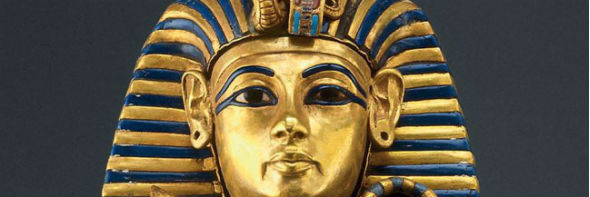
In January 2015, conservators at the Egyptian Museum in Cairo admitted an inappropriate adhesive was used to affix the blue and gold beard on the burial mask of King Tut (Pharaoh Tutankhamum) after it has been damaged the previous year:
"#3H4JJ*/ (13" *F3. *-BJB *4HJG *H* 9F. "EHF
https://t.co/9UHehPpxxV pic.twitter.com/CxclYCjKzi
— 'D91(J 'D,/J/ (@alaraby_ar) January 22, 2015
The conservators gave varying accounts of what happened, but the one thing they did agree upon was the damage done to King Tut's beard was irreversible:
They agree however that orders came from above to fix it quickly and that an inappropriate adhesive was used. All spoke on condition of anonymity for fear of professional reprisals. "Unfortunately he used a very irreversible material — epoxy has a very high property for attaching and is used on metal or stone but I think it wasn't suitable for an outstanding object like Tutankhamun's golden mask," one conservator said. "The mask should have been taken to the conservation lab but they were in a rush to get it displayed quickly again and used this quick drying, irreversible material."
Three of the museum's conservators reached by telephone gave differing accounts of when the incident occurred last year, and whether the beard was knocked off by accident while the mask's case was being cleaned, or was removed because it was loose.
In addition to the hasty glue job, which left a thin layer of translucent yellow between King Tut's beard and chin, the 3,300-year-old relic was also scratched during the amateur repair:
Another museum conservator, who was present at the time of the repair, said that epoxy had dried on the face of the boy king's mask and that a colleague used a spatula to remove it, leaving scratches. The first conservator, who inspects the artifact regularly, confirmed the scratches and said it was clear that they had been made by a tool used to scrape off the epoxy.
The burial mask was discovered in King Tut's tomb in 1922 and has since become one of Egypt's most famous relics and one of the biggest draws for visitors to the Egyptian Museum in Cairo.
According to the Egyptian news site Al Araby Al Jadeed, the museum decided to dim the lights in the room housing King Tut's mask in order to hide the damage from viewers:
Instructions were given in order to avoid showing the face and the damage in the chin area.
Last updated: 22 January 2015
